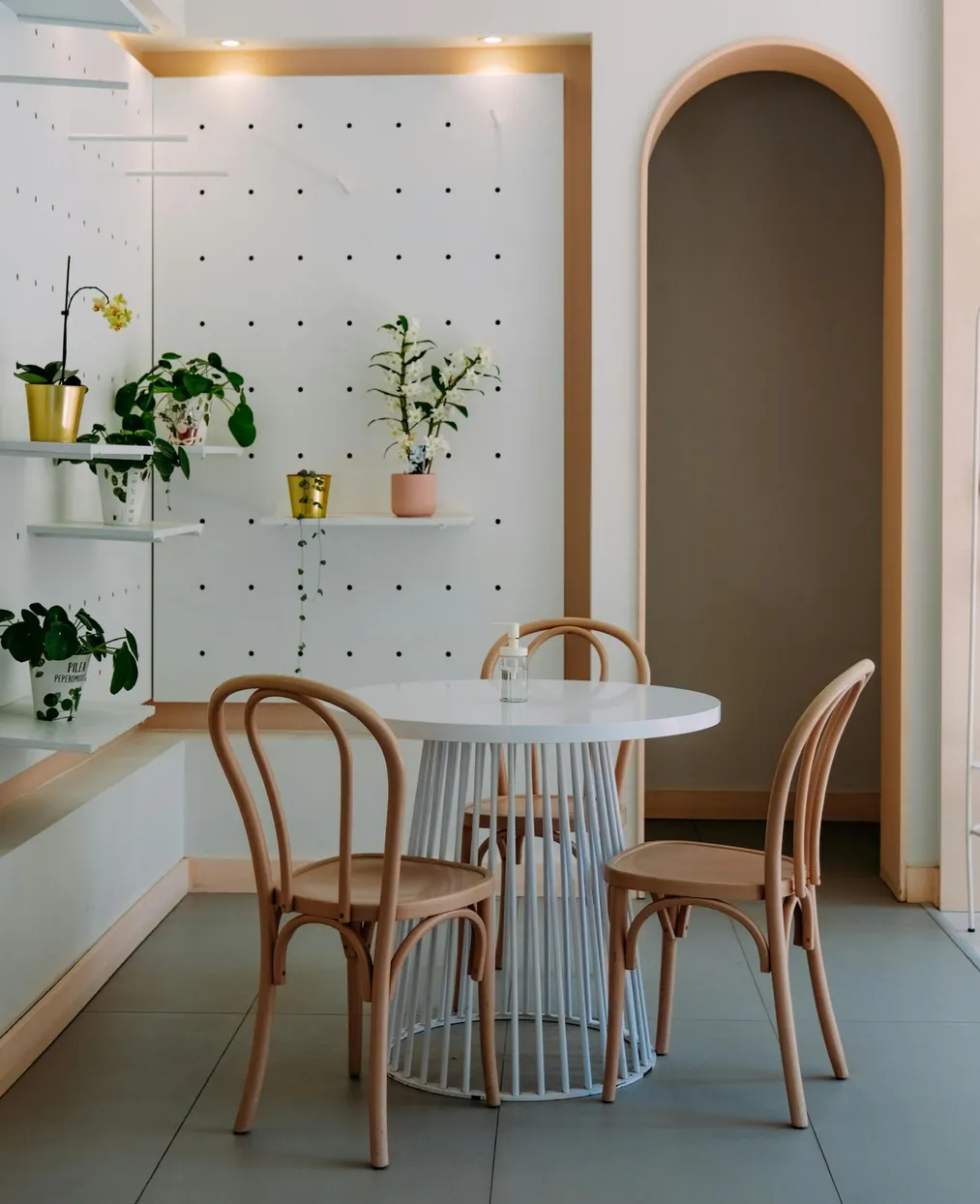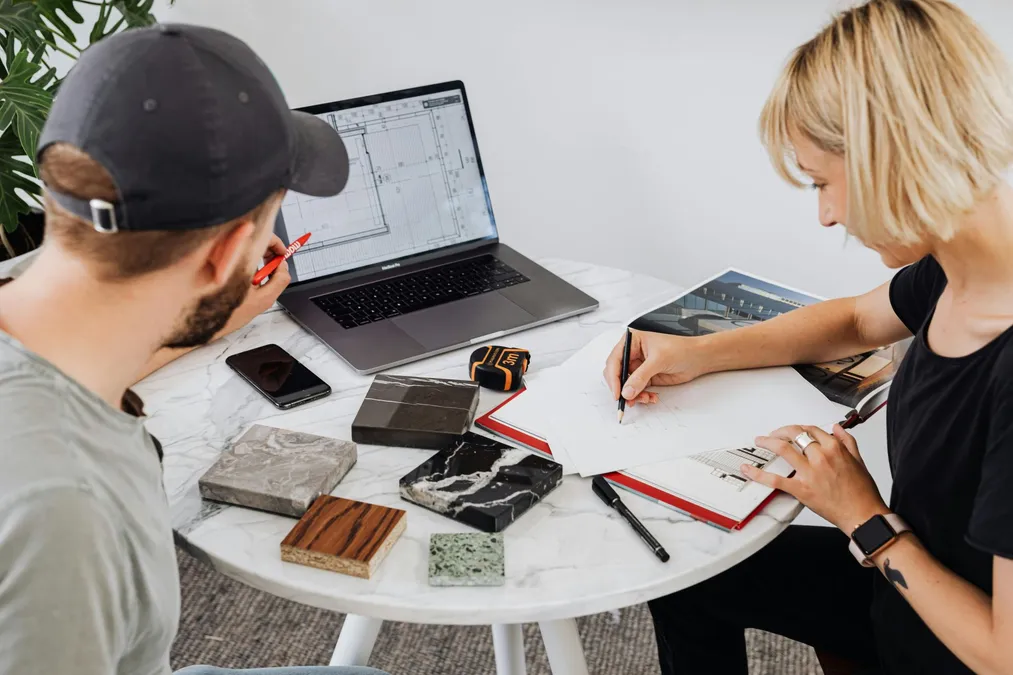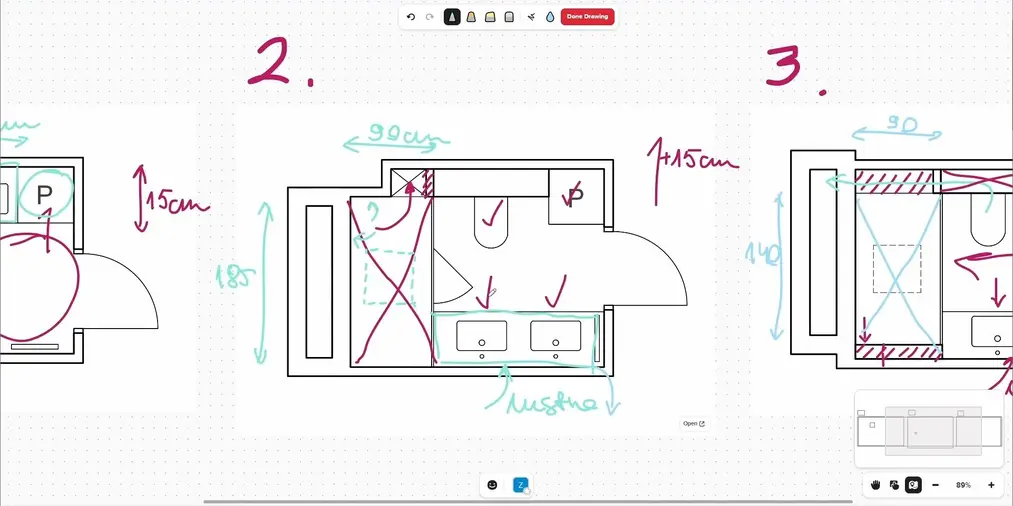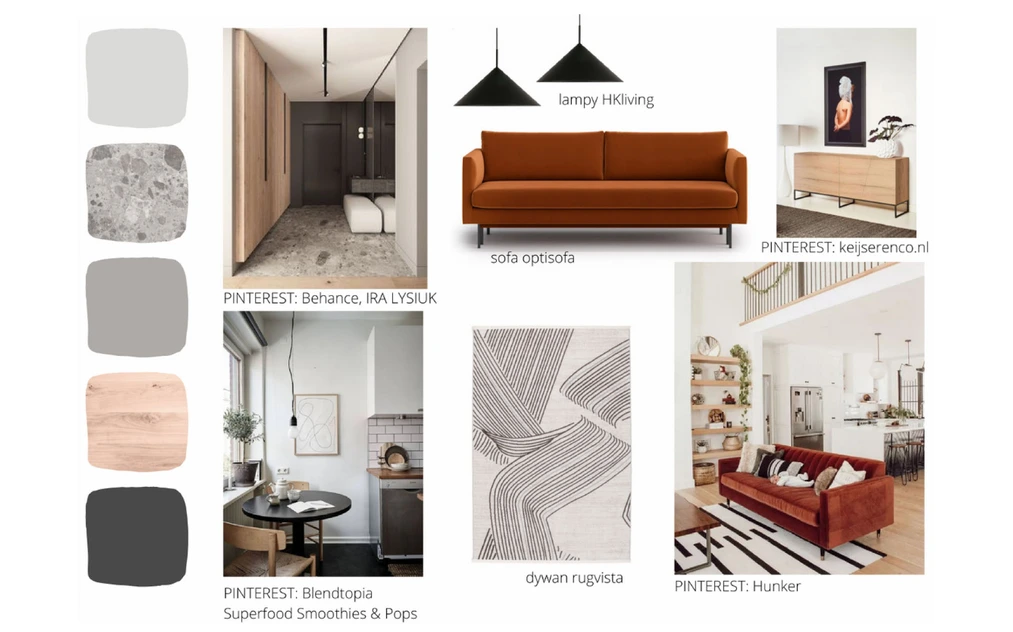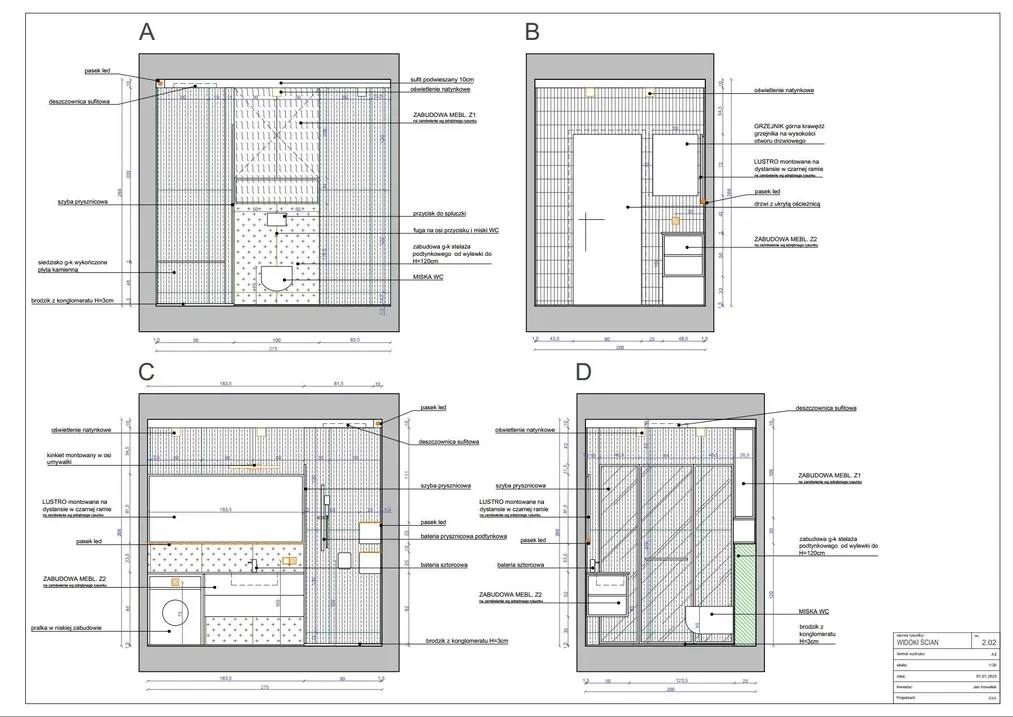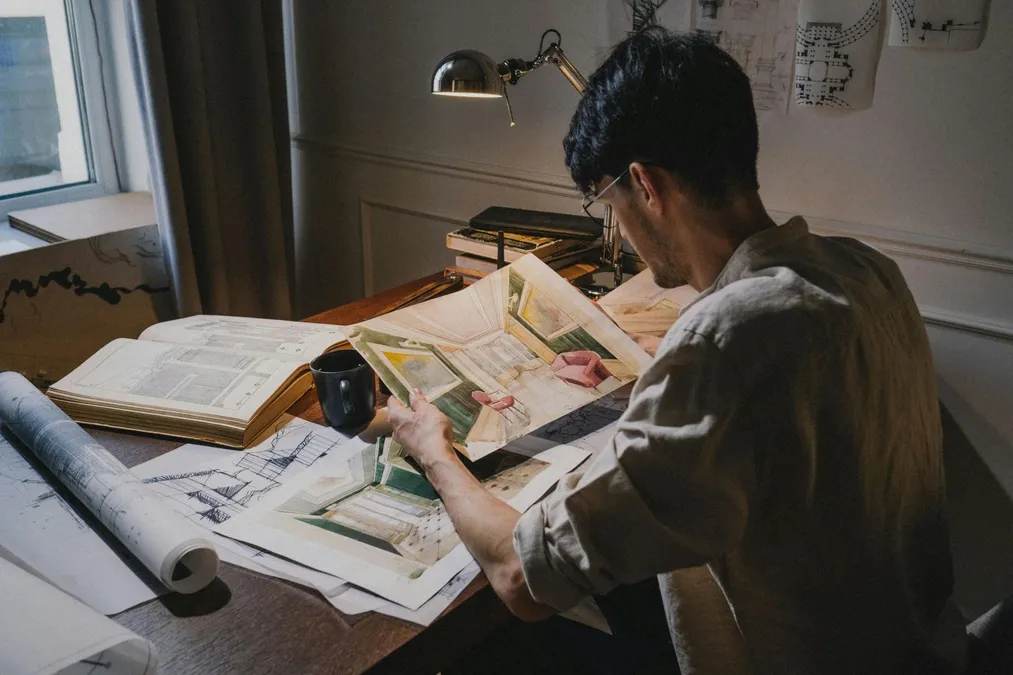Publication date: 05-02-2025 | Update date: 05-02-2025 | Author: Mateusz Ciećwierz
What is interior design and what does it involve?

Interior design is much more than just decoration — it's a complex process that requires a deep understanding of the users' needs, the building's structure, and the balance between aesthetics and functionality. Well-designed interiors should be ergonomic, comfortable, and tailored to specific users' needs, creating spaces that are not only beautiful but, above all, functional.
Key Insights
- Interior design is the art and science of shaping functional and aesthetic spaces.
- An interior designer must have a broad knowledge of psychology, ergonomics, and building regulations.
- Interior decoration is a complex process that goes beyond just decorating spaces.
- Well-designed interiors combine functionality and aesthetics.
- Interior design addresses the individual needs of the users of a given space.
What Is Interior Design and How Does It Affect Our Lives?
Interior design is a fascinating field that combines elements of art, science, and psychology. The goal of an interior designer is to create spaces that not only look appealing but also meet the users' needs and expectations. Well-designed interiors can have a significant impact on our well-being, productivity, and overall quality of life.
Interior Design: The Art and Science of Shaping Spaces
Interior design is an interdisciplinary field that requires both creativity and technical knowledge. An interior designer must skillfully combine aesthetics with functionality, creating spaces that are not only beautiful but also ergonomic and comfortable. The process of space planning encompasses many aspects such as color selection, material choices, lighting, and furniture, all of which come together to form a cohesive and harmonious whole.
The Role and Responsibilities of an Interior Designer
The role of an interior designer is to translate the client's needs and dreams into design language. To achieve this, the designer must possess not only artistic skills but also a thorough understanding of the principles of ergonomics, color psychology, and interior acoustics. The main tasks of an interior designer include:
- Analysis of client needs and expectations
- Space inventory and measurements
- Creation of interior design concepts and plans
- Selection of materials, colors, and lighting
- Preparation of technical documentation and 3D visualizations
- Project supervision
Individual Approach to Each Project
Every interior design project is unique because it needs to cater to the individual needs and preferences of the users. An interior designer always seeks to understand their client, their lifestyle, preferences, and dreams in order to create a space that reflects their personality. Thanks to this individual approach, each designed interior is unique and tailored to the specific requirements of the users, providing them with the highest level of comfort.
Modern interior design increasingly makes use of advanced technologies, such as 3D modeling programs. These tools allow clients to visualize their dream interior before the renovation works begin. This is an excellent tool that facilitates communication between the designer and the client and helps avoid potential misunderstandings.
What Does Interior Design Look Like in Practice?
Interior design is a complex process that consists of many stages. Each of them is essential to ensure that the final result fully satisfies the client. A professional interior designer makes every effort to consider all the investor's needs and expectations, while creating a functional and aesthetic space.
Stage I: Inventory and Space Planning
The first step in interior design is a detailed inventory of the room. The designer takes detailed measurements that will serve as a basis for creating the space plan. Based on this, 2-3 interior layout concepts are developed, taking into account the client's preferences and lifestyle. This stage is crucial for the functionality and usability of the designed interior.
Stage II: Installation Layout and Material Selection
Upon the approval of the space planning concepts, the designer proceeds to detailed planning of the electrical, lighting, and plumbing installations. It is at this stage that the locations for sockets, lighting points, and water and sewage connections are determined. Simultaneously, the selection of finishing materials such as tiles, floor coverings, paints, wallpapers, as well as furniture and decorations, takes place.
Stage III: Execution Drawings and Visualizations
Based on the gathered information and choices made, the interior designer prepares detailed execution drawings for construction and renovation teams. These include precise dimensions, types of materials, and all necessary details. At the same time, photorealistic 3D visualizations are created, allowing the client to see how the designed interior will look after the work is completed.
Stage IV: Supervision and Project Management
The final but equally important stage of interior design is the supervision of project implementation. The designer oversees the progress of the work, controls the quality of execution, the timeliness of material deliveries, and the compatibility of the results with the design assumptions. Their role also includes providing advice and assistance to the investor and coordinating the activities of all parties involved in the project.
Key Takeaways on Interior Design
Comprehensive interior design is not just about choosing colors and furniture. It's a complex process that requires a deep understanding of the client's needs, creativity, and aesthetic sensitivity. A professional interior designer can create a space that not only impresses visually but above all ensures maximum comfort and functionality.
An individual approach to each project guarantees that the resulting interior will fully reflect the client's tastes and expectations. Thanks to this, the space becomes not only beautiful but also cozy and user-friendly. The designer pays attention to every detail, no matter how small, to achieve a harmonious whole.
Collaborating with an experienced interior designer guarantees that the final result will be visually stunning and fully functional. Thanks to a comprehensive approach covering all stages of the design process, it is possible to create an interior that is perfectly tailored to the individual needs and preferences of the client, combining beauty with practicality.
FAQ - Frequently Asked Questions About Interior Design
What is the essence of interior design?
Interior design is the art and science of shaping interior spaces to be functional, aesthetic, and tailored to the users' needs. It is a complex process that requires a deep understanding of psychology, aesthetics, ergonomics, and even local building regulations and codes.
What is the role of an interior designer?
An interior designer is someone who can balance aesthetic aspects with functional ones. The job is to make the designed interior beautiful, but it must also effectively serve its purpose. Interior designers must be able to analyze the clients' needs, understand the structure of the building, and then create harmonious plans that will be executed by construction and decoration professionals.
Is every interior design project the same?
No, each project is treated individually. Professionals collaborate with the client to create interiors that reflect individuality and provide comfort. They respect each client's unique taste while offering professional advice and innovative solutions.
What are the stages of interior design?
Interior design is a multi-stage process. It begins with inventory and space planning. Then, places for installations, finishing materials, and equipment are selected. The next stage involves preparing technical drawings and 3D visualizations. The final stage is the supervision and management of investments based on the project.
What are the benefits of working with an interior designer?
Working with professionals ensures that interiors are not only beautiful and trendy, but above all are made with the client in mind – to make them feel comfortable and at ease. Thanks to a comprehensive approach and individual treatment of each project, it is possible to create interiors that fully meet clients' needs, combining functionality with aesthetics.
Read on our blog
-
![How to use Nano Banana Pro and how much does it cost? A practical guide for beginners]()
How to use Nano Banana Pro and how much does it cost? A practical guide for beginners
Learn how to use Nano Banana Pro for free via Gemini, when it’s worth paying, and which solution will be best for you! -
![Artificial intelligence - AI - for furniture manufacturers - see what possibilities it offers!]()
Artificial intelligence - AI - for furniture manufacturers - see what possibilities it offers!
Discover the AI tools and workflows that enable creating packshots, material variants, and interior arrangements: in practice, step by step. -
![Alternative to AutoCAD - Discover GstarCAD with a Perpetual License]()
Alternative to AutoCAD - Discover GstarCAD with a Perpetual License
Looking for a cheaper alternative to AutoCAD? GstarCAD is a professional CAD tool that costs up to 5 times less. See what it offers! -
![What are the most common mistakes made in Archicad by beginners?]()
What are the most common mistakes made in Archicad by beginners?
Are you starting with Archicad? Find out which mistakes beginners most often make and how to avoid them to work more efficiently!
